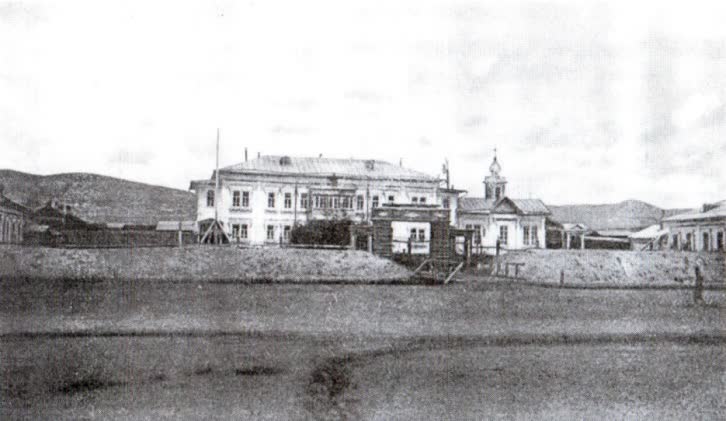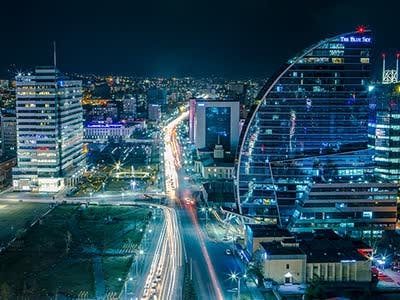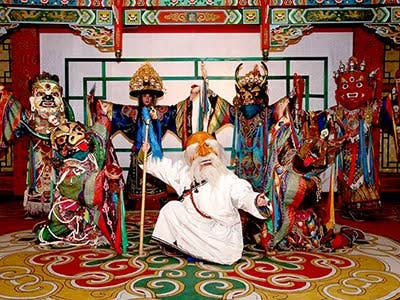Ulaanbaatar city
🏙️ ULAANBAATAR CITY
Where Tradition Meets Modernity in Mongolia’s Capital
Ulaanbaatar (also spelled Ulan Bator), nestled on the banks of the Tuul River and surrounded by mountains, is the dynamic capital of Mongolia. It’s the cultural, political, economic, and spiritual heart of the nation — where Buddhist temples, Soviet-era monuments, and modern skyscrapers coexist in a constantly evolving landscape.
Founded as a mobile Buddhist monastery in 1639, Ulaanbaatar has grown into a city of over 1.6 million people, home to nearly half the country’s population. It serves as the main hub for exploring Mongolia’s vast wilderness and cultural richness.
📌 QUICK FACTS
| 🔹 FACT | 🔍 DETAILS |
|---|---|
| 📍 Location | North-central Mongolia, Tuul River Valley |
| 🏙️ Population | Approx. 1.6 million |
| 🌡️ Climate | Continental: cold winters, warm summers |
| 🛬 Airport | Chinggis Khaan International Airport |
| 🗣️ Language | Mongolian (English widely spoken in tourism) |
| 💱 Currency | Mongolian Tugrik (MNT) |
| 🕒 Time Zone | UTC +8 |
| 🛕 Founded | 1639 as a nomadic Buddhist monastery |

🌟 HIGHLIGHTS
🏯 GANDAN MONASTERY
One of the few Buddhist monasteries to survive Soviet repression, Gandan Tegchinlen Monastery is active and home to a towering golden statue of Migjid Janraisig.
🗽 SUKHBAATAR SQUARE
The central square named after revolutionary hero Damdin Sukhbaatar is surrounded by key government buildings and monuments, including a seated Genghis Khan statue.
🦖 DINOSAUR MUSEUM
The Central Museum of Mongolian Dinosaurs showcases fossils found in the Gobi Desert — most notably the Tarbosaurus bataar.
🐎 NATIONAL MUSEUM OF MONGOLIA
Discover Mongolia’s rich history — from ancient nomads and the Mongol Empire to the present day — through engaging and modern exhibits.
🏞️ BOGD KHAN MOUNTAIN
A UNESCO Biosphere Reserve on the city’s southern edge, offering hiking, panoramic views, and a visit to the Bogd Khan Winter Palace Museum.
🛍️ STATE DEPARTMENT STORE
An iconic shopping hub in the city center, where you can find traditional clothing, cashmere, handicrafts, and international brands.
❓ FREQUENTLY ASKED QUESTIONS (FAQ)
❓ Is Ulaanbaatar safe for travelers?
Yes, Ulaanbaatar is generally safe. Exercise typical urban precautions, especially at night or in crowded markets. Traffic and air pollution can be concerns.
❓ When is the best time to visit?
The best time is June to September, when the weather is mild and events like the Naadam Festival take place.
❓ What are must-try local foods?
Don’t miss khuushuur (fried meat pies), buuz (steamed dumplings), and airag (fermented mare’s milk). There are also many international restaurants.
❓ How can I get around the city?
You can use taxis, ride-hailing apps like UBCab, or hire private drivers. Walking is pleasant in the central areas.
❓ Are English and other languages spoken?
While Mongolian is the official language, English is widely spoken in hotels, restaurants, and among younger locals in tourist areas.
🧭 TRAVEL TIPS
Bring cash: Credit cards are accepted in major places, but smaller shops and markets prefer Tugriks.
Dress in layers: Ulaanbaatar’s weather can change rapidly — even in summer.
Start here: Use UB as your launchpad for excursions to Terelj National Park, Khustai, or the Gobi Desert.
💬 WHY VISIT ULAANBAATAR?
Ulaanbaatar is more than a gateway to Mongolia’s vast wilderness — it’s a cultural crossroads. You’ll find ancient monasteries and cutting-edge galleries, bustling markets and serene mountain trails, all wrapped in the warmth of Mongolian hospitality.
Whether you’re catching your breath after a rugged journey or diving into the city’s buzzing nightlife, Ulaanbaatar offers a deeply authentic experience.
RELATED DESTINATIONS
Explore the Bogd Khan Winter Palace Museum in Ulaanbaatar, home to Mongolia’s last king and rich in artifacts, art, and royal history.
Discover Ulaanbaatar, Mongolia’s vibrant capital city, blending ancient culture with modern life. A gateway to adventure, history, and hospitality.
Experience Mongolia’s finest traditional music, dance, and throat singing at Tumen Ekh Ensemble’s captivating live performances.


